#bulgakov is his secretary
Text
(i moved to @karaviav!!)
ok gogol dont freak out but theres an ugly bitch on your left....
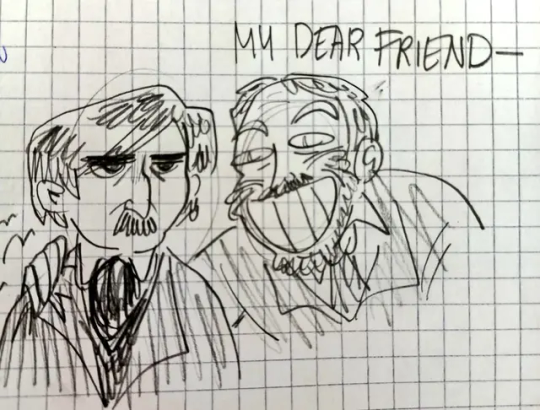
#dostoyevsky is president of the gogol fanclub in hell#bulgakov is his secretary#does this count as historical fanart or do i have a michelangelo pass#fyodor dostoevsky#nikolai gogol#mykola hohol#fanart#russian literature#traditional art#ruslit#dostoyevsky#historical fanart#old men yaoi#sorry
39 notes
·
View notes
Text
How love saved The Master and Margarita
(aka Bulgakov and Nyurenberg's story)
Mikhail Bulgakov and Elena Shilovskaya (née Nyurenberg) met for the first time in 1929 when they were both married - to Lubov Belozerskaya and Yevgeny Shilovskiy respectively.
To quote Elena herself, "I was simply the wife of lieutenant-general Shilovsky, a wonderful, very noble man. It was what they call a happy family: a husband with a high position, two beautiful sons. In general everything was fine. But when I met Bulgakov I knew that this was my fate, in spite of everything, in spite of the incredibly difficult tragedy of separation. It was fast, unusually fast, at any rate for me, love to last my whole life."
She tried everything to avoid him; but then, when they met a year and a half later, the first thing he said to her was "I can't live without you." They began an affair.
In February 1931, Elena's husband found out about their relationship. He demanded they broke it off, and for the sake of their children she never spoke to Bulgakov again for almost a year.
When he met her again, in June 1932, their love was renewed. Elena ran away with him and her children. Bulgakov wrote to Shilovskiy begging him to let Elena go, and after much persistence he finally accepted.
Elena's older son went to live with his father, while her youngest stayed with her. Bulgakov took him under his wing and cared for him like his own child. He divorced Lubov Belozerskaya in October 1932 and married Elena on the next day.
During their honeymoon, while the couple was staying at a hotel in Leningrad, Bulgakov told Elena about a novel he had begun to write years before and that he had burned down in 1930. He had lost all hope for this book, until Elena entered his life. Then, his inspiration had returned. He picked up pen and paper, and started scribbling. When Elena asked him what he was doing, he replied that he was rewriting the book. It was all in his head. But this time, he wanted to add a new character to the story.
Despite being rich and beautiful, Margarita Nikolaevna is not happy at all. Her life is boring and meaningless, until she meets a troubled nameless writer, for whose sake she'll make a deal with the Devil himself. Elena had become the prototype for one of his main characters.
Bulgakov finished editing The Master and Margarita a few weeks before his death with Elena's help. He had been sick and bed ridden for a long time. After he passed, Elena wrote in her diary; "March 10th, 1940. Misha has died."
Elena - who had become Bulgakov's personal secretary and biggest supporter - fought to see her husband's latest, most brilliant work published. She knew it was an impossible task, considering the contents of the book, and their friends tried to discourage her, but she wasn't going to give up on Bulgakov.
First, she tried publishing it on a popular literary newspaper, the Moskva. But the abridged, censored version that got printed was so awful that she eventually stepped back.
Elena kept the manuscript under lock and key for years, and then, in 1967, she finally got it published in France. The first complete version of the novel was released in the Soviet Union in 1973, but illegal copies of it had already been going around for years.
The Master and Margarita was an immediate success. Everyone from all over the world was praising its genius and wit. Eugenio Montale, one of Italy's most important poets and translators of the time, called it "a true miracle".
Margarita - the real Margarita - had once again saved her Master, not letting his name fade away in the mist of time.
The manuscript hadn't burned.
#I LOVE THEM OKAY#let me know if there's any mistake!#mikhail bulgakov#михаил булгаков#soviet literature#russian literature#the master and margarita#ruslit#мастер и маргарита#руслит#cross posted on twitter
19 notes
·
View notes
Text
The Last Station (2009)
Today I cried because of two thing. First, because Anna Karenina. Second, because i watched The Last Station (2009).
a biographical movie about Leo Tolstoy.

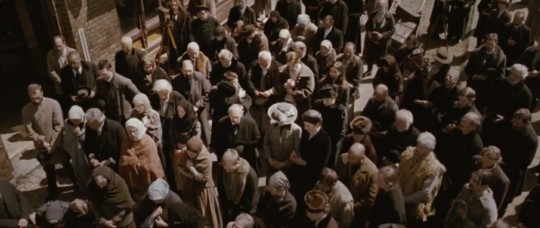
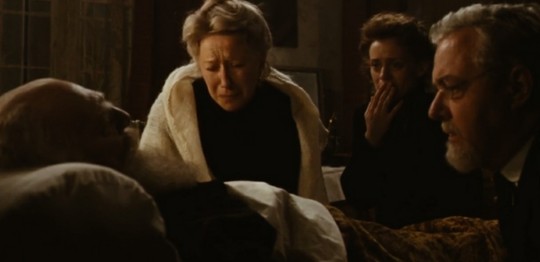
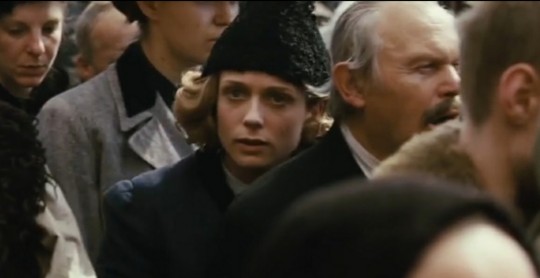
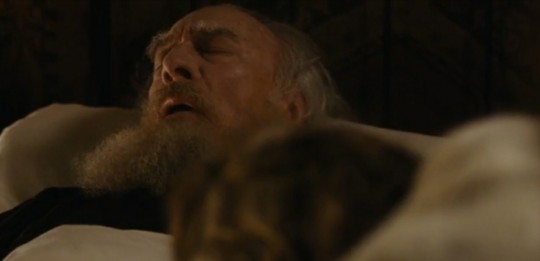

This movie tell us a drama between Tolstoy, his family, and fames that he receive in his successfull career as writer. The conflicts started when sofya (Tolstoy wife) and Chertkov ( a devoted tolstoyan) arguing about Leo Tolstoy copyrights. Chertkov would like Tolstoy copyrights to be given to Russian society while sofya want it to be given to her family.
Seems pretty simple but this movie actually explore a lot. Such as like a love. Despite all the quarrel and different point of view that Tolstoy and her wife has, they both are one. There's something about love itself between both of them that can't be separated of.
Here, Valentin Bulgakov, Tolstoy secretary, saw it in his eyes, that love isn't a sin or something to be shameful of.
When bulgakov asked Tolstoy does he love his wife, Tolstoy answered :
"When I was courting Sofya, she was so young and pure, it seemed impossible that I'd ever have her. I didn't want to tell her how I felt and I wanted to tell her nothing else. So I wrote down a string of letters and asked her if she could decipher them. She looked completely confused, thinking it was a game or... I gave her one clue. The firs two Y's, I said, stand for "your youth" and then the most miraculous thing happened. She simply spoke the phrase, my phrase as if she had read my mind. In that moment, we both knew we would always be together. For those first years, we were incredibly happy, terrifyingly happy."
This movie somehow changes my perspectives on love itself.
Being in love or let's for simple say being with someone you believe or trust, doesn't mean they should resemble you in some type of way. Doesnt mean that they should be your twin in every single thing, either in your view on political matters, your favourites movies, music etc.
What we need and what we seeks is a nurturing person who fulfill us in a way that no other person in the world able to. A person who able to see beyond what other people able to see in us and a person who would like to to swim beneath the deeper despair in us .But yeah I think sometimes, there's always be a little bit of misunderstanding in this case, sometimes when love act too much and declared itself as the one who knew which better for us and which not, we felt our self instantly betrayed. Our true self.
But doesn't being in companion for each other mean to be one and not a separate soul?
Actually I don't know what I'm talking about but I'm really crying.
I am the work of your life, you are the work of mine. That's what love is! - sofya tolstaya
#leotolstoy#leo tolstoy#the last station#thelaststationmovie#anna karenina#war and peace#Lev tolstoy#movielist#moviethoughts#james mcavoy
21 notes
·
View notes
Text
I’LL LOVE YOU ALWAYS
March 20, 1935

Directed by Leo Bulgakov
Writers: Lawrence Hazard (story), Vera Caspary, Sidney Buchman
Produced by Everett Riskin for Columbia Pictures
Synopsis ~ Actress Nora Clegg marries Carl Brent, an unemployed young engineer, whose estimation of his worth and ability keeps him from getting a job. He finally acquires a position that will require him to go to Russia for a period of time, while Nora goes back to the stage during his absence. But he loses out on the job at the last minute, and rather than tell Nora he has failed again, he steals money from his prospective employer to lavish on Nora before his ‘supposed’ departure. His goes to jail and hides the truth from Nora by having an acquaintance mail his letters from Russia. He then finds out that Nora is pregnant.
PRINCIPAL CAST
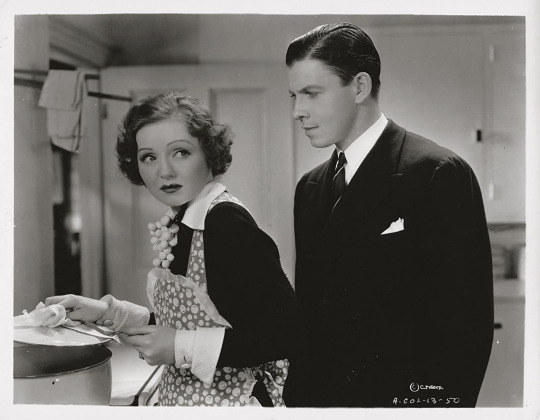
Nancy Carroll (Nora Clegg) was nominated for an Oscar in 1930 for The Devil’s Holiday. She also appeared with Lucille Ball in Jealousy (1934).
George Murphy (Carl Brent) appeared with Lucille Ball in Jealousy and Kid Millions, both in 1934. They also were in A Girl, A Guy, and a Gob in 1941, as well as two radio adaptations of the film. In 1959, Murphy served as guest host of “The Westinghouse Desilu Playhouse” when Desi Arnaz took a role in his own anthology series. He was also a performer in “The Desilu Revue” aired in December 1959. As the host of “MGM Parade”, he interviewed Lucy and Desi in February 1956.
Raymond Walburn (Charlie) previously appeared with Lucille Ball in Broadway Bill (1934), Jealousy (1934), and Lover Come Back (1946).
Arthur Hohl (Jergens) previously appeared with Lucille Ball in Bulldog Drummond Strikes Back (1934), Jealousy (1934), and The Whole Town’s Talking (1935).
Jean Dixon (Mae Waters) would also appear with Lucille Ball in Joy of Living (1938).
Robert Allen (Joe) previously appeared with Lucille Ball in Broadway Bill (1934) and Jealousy (1934).
Harry Beresford (Mr. Clegg) would appear with Lucille Ball in Follow The Fleet (1936).
Paul Harvey (Sandstone) appeared in seven films with Lucille Ball. He played the art critic in “Lucy the Sculptress” (ILL S2;E15).
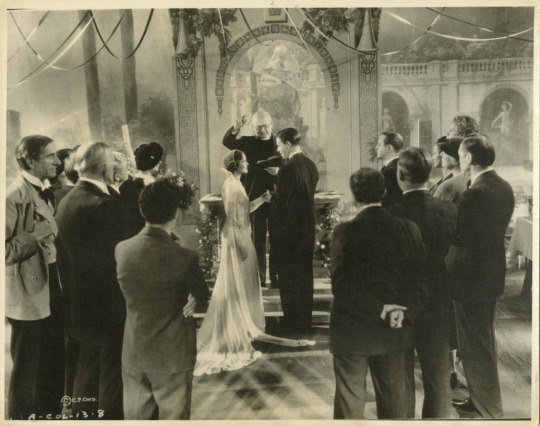
UNCREDITED CAST
Lucille Ball (Lucille) appears in her 20th feature film since coming to Hollywood in 1933.
Eadie Adams...Singer
Irving Bacon (Theater Manager) did seven films with Lucille Ball before playing Mr. Willoughby in in “The Marriage License” (1952) and Will Potter in “Ethel’s Hometown” (1955).
Eddie Baker...Doorman
Elaine Baker...Sandstone's Secretary
John Beck...Ghost
Yvonne Bertrand...Operator
Stanley Blystone...Bill Collector
Sven Hugo Borg...Hamlet
Lynton Brent...Laertes
Helen Brown...Worker
Steve Clark...Bill Collector
Claudia Coleman...Francine
Gino Corrado...Waiter
D'Arcy Corrigan...Waiter
Pearl Eaton...Gertrude
Vessie Farrell...Jenny
Budd Fine...Furniture Man
Sam Flint...First Business Man
Mary Foy...Kitty
Frankie Genardi...Shoeshine Boy
Adda Gleason...Manager
Grace Goodall...Sarah
Roger Gray...Foreman
Howard Hickman...Dean
Samuel E. Hines...Bank Teller
Alfred P. James...Canby
Ethan Laidlaw...Cab Driver
W.E. Lawrence...Furniture Salesman
Edward LeSaint...Minister
Otto Malde...Steward
Frank Marlowe...Bellhop
Adrian Morris...Pigface
Bruce Randall...Waiter
Jack Richardson...Bartender
Billie Van Every...Mary
John Paul Jones, Moselle Kimbler, Lon Poff, Bert Starkey, Charles Marsh, Elaine Waters, Gay Waters
“LOVE” TRIVIA

All but three of the principal cast members also appeared with Lucille Ball in Jealousy in 1934.
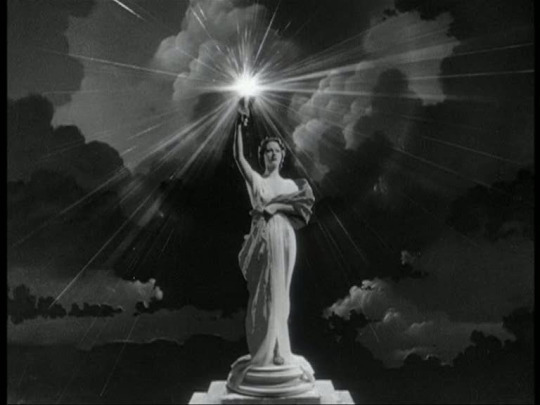
During her brief period at Columbia, Lucille Ball logged in miniscule roles in eight feature films and three shorts. It is fair to say that Columbia and her torch got more screen time than Lucille!
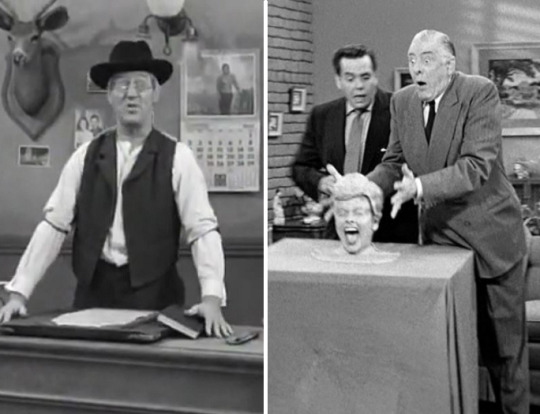
Irving Bacon (Theatre Manager) and Paul Harvey (Sandstone) were the only two cast members to later appear on “I Love Lucy”.
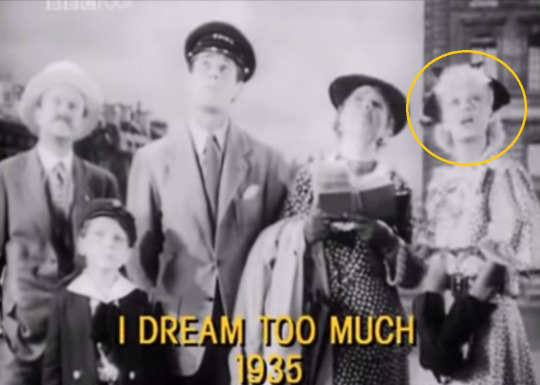
This is just one of 13 films (including three shorts) featuring Lucille Ball to be released in 1935. All except I Dream Too Much were uncredited:
Behind the Evidence (Secretary)
Carnival (Nurse)
Hooray For Love (Chorine)
The Whole Town's Talking (Bank Employee)
Roberta (Fashion Model)
I'll Love You Always (Lucille)
Old Man Rhythm (College Girl)
Top Hat (Flower Clerk)
The Three Musketeers (Extra)
Foolish Heart - short (Hat Check Girl)
His Old Flame - short
A Night At The Biltmore Ball - short (Lucille Ball)
I Dream Too Much (Gwendolyn Dilley) - Lucille Ball’s first on screen credit
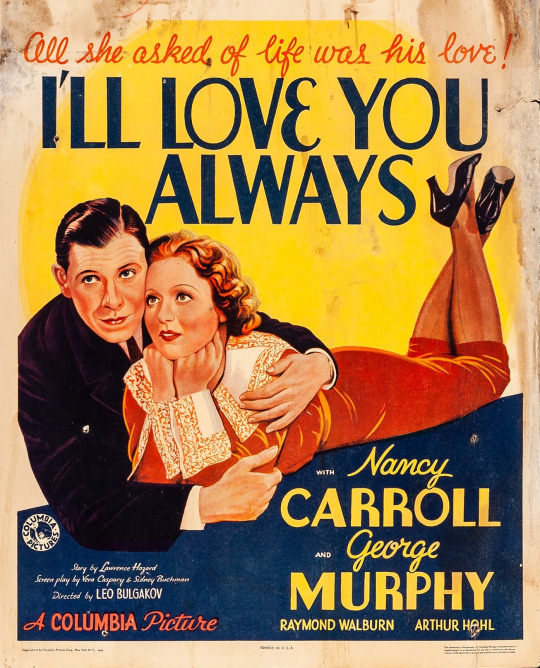
#Lucille Ball#I'll Love You Always#Columbia Studios#George Murphy#Nancy Carroll#Irving Bacon#Leo Bulgakov#Arthur Hohl#Raymond Walburn#Paul Harvey#1935
2 notes
·
View notes
Text
Today in Christian History

Today is Monday, January 21st, the 21st day of 2019. There are 344 days left in the year.
Today’s Highlight in History:
1217: Matthew Paris is clothed as a novice at the Abbey of St. Albans in England. He will be remembered as a monk who chronicled English history.
1525: Anabaptists come into being in Zurich when Conrad Grebel baptizes George Blaurock.
1525: Hans Denck, a schoolmaster who argues that Lutheran reform is empty unless accompanied by the inward light of the Spirit, is banished from the city of Nuremberg.
1549: The English parliament passes “An Act for Uniformity of Service and Administration of the Sacraments throughout the Realm” which establishes the first Book of Common Prayer in Edward’s reign.
1575: William Byrd and Thomas Tallis are awarded letters patent giving them the exclusive right to print music in England, and to print ruled music paper. Effective for twenty-one years, this is the first patent of its kind. The first work printed under the patent will be their own Cantiones (1575), containing 34 motets, half by Tallis and half by Byrd.
1609: Death in Leyden, Netherlands, of Joseph Justus Scaliger, famed for putting ancient chronology onto a scientific footing.
1672: A Bedford, England, congregation calls John Bunyan as its pastor. He is in prison at the time for preaching.
1750: Newly-ordained missionary Christian Friedrich Schwartz embarks from London for Tranquebar, the seat of the Danish Mission in India. Four months after arriving, he will preach his first sermon in Tamil and afterwards will conduct a successful work.
1781: Robert Aitken petitions the U.S. Congress to officially sanction his publication of the first English-language Bible printed in America.
1901: At the Academy of Music in Kansas City, Charles Parham preaches his first sermon dedicated soley to the experience of the baptism of the Holy Spirit with the evidence of speaking in other tongues.
1913: Death in Philadelphia, Pennsylvania, of Fanny Coppin, an ex-slave who became an educator to her people, principal of the Institute for Colored Youth, an inspiration to the African Methodist Episcopal Church, and a missionary to South Africa.
1914: The American Lutheran Publicity Bureau is organized in New York City to inform the general public about The Lutheran Church—Missouri Synod.
1921: Presbyterian minister Samuel McCrea Cavert, a notable ecumenist, becomes the General Secretary of the Federal Council of Churches of Christ in America. A chief player in forming the World Council of Churches, he will die in 1976. “The temptation of Protestantism has always been to magnify freedom at the expense of unity. The temptation of Roman Catholicism, on the other hand, has been to magnify unity at the expense of freedom.”
1931: Soviets execute the Orthodox priest Peter Alexeyevich Bulgakov for “agitation against Soviet power.” He had long resisted their efforts to get him to abandon his faith and three months before his death had refused to hand over church keys to them.
1956: Elders of the Little Flock and twenty-eight other Christian leaders in Shanghai are arrested. They have carried on the work begun by Watchman Nee, who is in prison.
#Today in Christian History#January 21#Fanny Coppin#principal of the Institute for Colored Youth#African Methodist Episcopal Church#African missionary#educator#American Lutheran Publicity Bureau#Samuel McCrea Cavert#World Council of Churches#ecumenist#General Secretary of the Federal Council of Churches of Christ in America#Soviets#execute#Peter Alexeyevich Bulgakov#refused to renounce faith#Christian leaders in Shanghai are arrested#John Bunyan#William Byrd#Thomas Tallis#Christian Friedrich Schwartz#Danish Mission in India#tamil language sermons#Anabaptists come into being
3 notes
·
View notes
Photo
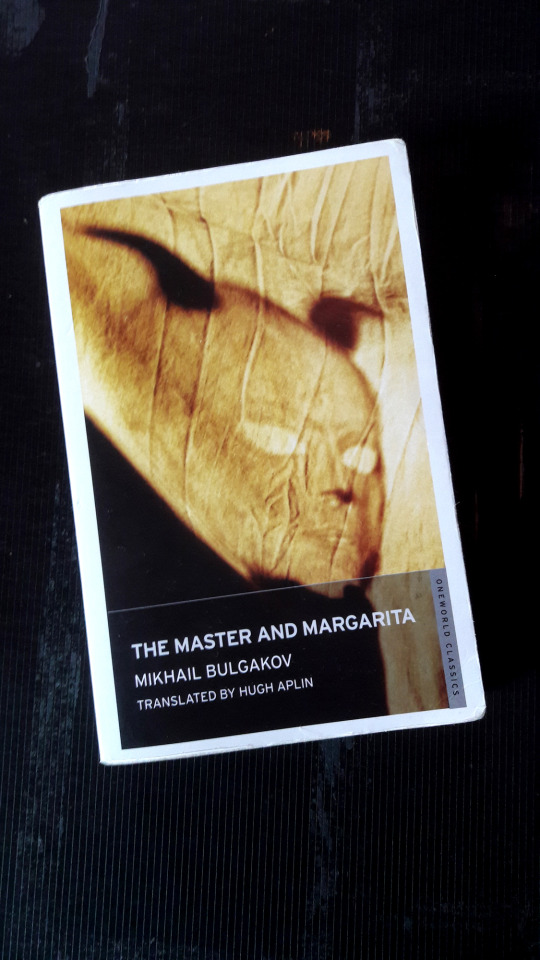
With the coronavirus forcing me to stay home maybe it’s finally time to review that pile of 7 read books by my bedside, starting with review part 1 of The Master and Margarita, which I actually wrote in January…
Part 1 – Structured Chaos or Unorganized Strategy
Warning: Mannnnny spoilers.
The Master and Margarita by Russian author Mikhail Bulgakov. Where to start? Most blurbs describe the story as the following: the Devil and his companions descend upon Moscow and create havoc amongst society. Only the “Master”; a failed writer committed to an insane asylum, and Margarita; his faithful lover, can escape the Devil’s plans.
Starting with story structure: the character of the Master, supposedly the lead protagonist, is only introduced in chapter 13, the novel actually opens with a poet (whom at first I presumed was the main protagonist), meeting an editor of a literary journal, at a park to discuss work. The Devil, disguised as a German professor, rocks up and interrupts their discussion. Chapter 2 starts a whole new story, it’s the story of Pontius Pilate, the Roman governor who condemned Jesus to death. Bewilderingly we are immersed into yet another world and we literally get a novel within a novel.
The Master and Margarita is divided into two parts; the first alternates between multiple comedic sketches illustrating the havoc committed by the Devil and his gang, the sufferings of the poet, introductions of armfuls of new secondary characters, the eventual introduction of the Master, and introduction of Margarita, and the story of Pontius Pilate.
Each comedic scene is almost like its own short story. A few years back I read a collection of Russian short stories and I instantly recognized in The Master and Margarita a number of the same styles, particularly the fondness for taking an absurd event and playing it out seriously in an everyday scenario. For example in one scene a bank manager is transformed into nothing but a suit, you can’t see his head or hands but the suit continues its work as if nothing out of the ordinary has happened, whilst outside sits his secretary (possibly also his secret lover) crying and at a total loss as what to do to bring back her boss.
These comedic scenes were so rich in detail, and so episodic by nature, that I found it hard to make quick progress through the book. After each chapter I felt I needed a pause to let the last scene sink in. Consequently, it took me ages to get through The Master and Margarita. I’ve often come across books claiming to use a mixture of styles, but The Master and Margarita is the first one I’ve thought “holy hell, this is it”. The second half of the novel takes a more linear approach to the story, chapters 19 to 24 are dedicated to Margarita, it’s the first-time sequential chapters follow the same plot instead of alternating between storylines.
This incoherence isn’t surprising when we consider that Bulgakov wrote the novel over a period of 12 years, and constantly made revisions. This is a novel that exists in six variations. Some of the changes in style are artistic and interesting, others are just the product of an ever-changing mind.
Review by Book Hamster
#just finished reading#the master and margarita#mikhail#mikhail bulgakov#bulgakov#russian#russian literature#odd novels#love reading#love books#The Devil#devil#demons#witches#book blog#book covers#strange books#strange things#comedic books#Black Comedy#sense of humor#literary structure#cult classics#book hamster#lunitic#censorship#russian censorship#Religion#religion in books#pontius pilate
1 note
·
View note
Quote
'May I see the chairman of the housing committee?' the economic planner inquired politely, taking off his hat and putting his suitcase on the chair by the doorway.
This, it would seem, simplest of questions so unnerved the man at the desk that a change came over his face. Squinting with alarm, he mumbled incomprehensibly that the chairman was not there.
'Is he in his apartment?' asked Poplavsky. 'I'm here on a very urgent matter.'
The seated man's reply was again incoherent. But even so, the implication was that the chairman was not in his apartment either.
'When will he be back?'
The seated man said nothing in reply, and looked out the window with a kind of anguish.
'Aha!' said the smart Poplavsky to himself and inquired after the secretary.
The strange man at the desk turned purple from the strain and, again incomprehensibly, said that the secretary wasn't there either...that he was ill...and that no one knew when he'd be back...
'Aha!' said Poplavsky to himself, 'But is there anyone here from the housing committee?'
'Me,' the man answered in a weak voice.
the master and margarita, mikhail bulgakov
2 notes
·
View notes
Photo

Writer Leo Tolstoy and his secretary Valentin Bulgakov 1910
204 notes
·
View notes
Text
How much would fictional houses cost in real life?
(CNN)From Great Gatsby's luxury estate to Count Dracula's Transylvanian lair and Amelie Poulain's tiny Parisian pad, the houses in which our favorite fictional characters reside are often inspired by real-life properties.
CNN tracked down some of literary and cinematographic history's most famous post codes and calculated their value in today's property markets. Use the slider tool to reveal their prices.
The Great Gatsby (1925), F. Scott Fitzgerald
Great Gatsby's home in F. Scott Fitzgerald's novelis a symbol of1920s wealth in America.
"In his blue garden men and girls came and went like moths among the whisperings and the champagne and the stars," the narrator says of Gatsby's buzzing property.
One of the properties thought to have inspired Fitzgerald -- and director Baz Luhrmann's 2013 film adaptation, the source of the image above -- is the Beacon Towers in Great Neck, Long Island, near where the author lived between 1922 and 1924, and wrote the first three chapters of the novel.
Demolished in 1945, the Gothic building had belonged to suffragette and architectural designer Alva Belmont, who threw opulent parties for the city's elite.
All this history combined with literary fame, would have further upped the mansion's price today, says associate broker Maggie Keats of Douglas Elliman Real Estate.
Master and Margarita (1967), Mikhail Bulgakov
The famous, morbid ball scene in Bulgakov's novel was partly inspired by wild parties held at the Spaso House, the US ambassador to Russia's residence since 1933.
Bulgakov and his wife attended one such revelry in 1935, where live pheasants, baby bears, goats and roosters mingled with guests in smoking jackets and ball dresses.
According to Savills global real-estate agent, the value of the Spaso House today puts it in the top 5% of Moscow's real estate.
Despite this, the US government paid $3 per year between 1990 and 2004 to rent the building -- this fixed price was set by a Soviet-era contract, which devalued after the collapse of the USSR. The rent has since changed but is a secret.
Sherlock Holmes,Sir Arthur Conan Doyle
When Conan Doyle wrote his detective series, the real Baker Street in London stopped in the 100s -- 221B didn't exist.
When the street was renumbered in the 1930s, the Abbey National Building Society bank was assigned the notorious number 221.
The bank received so many letters addressing the famous detective that it hired a secretary to respond to the queries.
A dispute over whether the Sherlock Holmes Museum -- located at 239 Baker Street, and opened in 1990 -- or the bank should receive such letters was resolved in 2002, when the bank left the building.
The Holmes Museum, which emulates the detective's home, is technically located between 237 and 241 Baker Streetalthough special permission from the City of Westminster allowed it to list its addressas 221b.
The property's current exorbitant price tag may have proved challenging even for the celebrity detective, due to the explosion of London's property market over the past 20 years.
Pippi Longstocking, Astrid Lindgren
The nine-year-old Swedish children's book heroine Pippi lives in Villa Villekulla with a monkey, Mr Nilsson, and a horse who is usually found on the porch. One of the house's main treasures is the tree that grows Swedish soda water.
The house pictured above, built for the 1969 Swedish TV series based on Lindgren's books, is now the Pippi Longstocking Museum located at the heart of an attraction parkin the small town of Kneippbyn on Sweden's Gotland Island.
In the Mood For Love (2000), Wong Kar-wai
The two small flats where this movie plays out shape the plot and atmosphere of this classic romance, as neighbors Chow Mo-wan and Su Li-zhen learn that their spouses are having an affair.
The typically cramped Hong Kong properties reflect the characters' lack of privacy -- they are constantly spied upon by other neighbors and their landlords -- and are a catalyst for them falling in love.
But there is also a political context. By the early 1960s -- the era depicted in the film -- thousands of Shanghai exiles had moved to Hong Kong, especially to the North Point neighborhood.
Many of them were wealthy business people (like Su's husband) and intellectuals (such as Chow), and expecting their move to be temporary they led a separate life to locals, which explains the characters' sense of alienation.
Engel & Vlkers estimated the value based on the cost of an average 861-square-foot (80sqm)flat in a traditional walk-up in North Point, Hong Kong.
One Hundred Years of Solitude (1967), Gabriel Garca Mrquez
The house in which generations of the Buenda family live, love and die in the fictional village of Macondo was inspired by Nobel laureate Gabriel Garcia Marquez's grandparents' home in Aracataca, Colombia, where the author grew up.
"Neither my mother nor I, of course, could even have imagined that this simple two-day trip (to sell my grandparents' house) would be so decisive that the longest and most diligent of lives would not be enough for me to finish recounting it," Marquez wrote about his trip to the house as a young man in his autobiography "Living to Tell the Tale".
Based on Marquez's writings, Colombia's Ministry of Culture in 2010 spent $350,000 reconstructing the house -- which had been demolished -- and opened it as a museum in the author's name.
Dracula (1897), Bram Stoker
The Bran Castle in Brasov, which is now owned by the Romanian royal family, is generally associated with the famous vampire Dracula, and consequently receives 800,000 visitors a year.
But there isn't any historical evidence to support the myth around Bran. Built in the early 13th century by the Teutonic knights, the castle has no concrete link to Vlad Tepes -- the Wallachian medieval king who inspired Stoker's vampire. While Tepes ordered the killing of many Saxons in Brasov, it is not known if he ever stepped foot in the castle.
Nevertheless, Forbes magazine deemed the property to be the most expensive European home in 2007.
Romanian real estate agents Transylvanian Properties used that figure to make their estimate, taking into account subsequent renovations and extensions.
Amlie, (2001), Jean-Pierre Jeunet
This film's whimsical depiction of contemporary Parisian life revolves around Amlie Poulain, a shy waitress who lives in a tiny Montmartre flat.
With its crimson walls, replica Renaissance paintings, and pig-shaped bedside table lamp, the flat reflects Amlie's cheekiness and charm.
The neighborhood is part of the 18th arrondissement, in north Paris, near the Sacre-Coeur basilica, the Moulin Rouge cabaret and a Dali museum. Montmartre became famous as an artists' hub, where the likes of Pablo Picasso and Vincent Van Gogh lived, attracted by the cheap rents.
But this is not the case anymore -- the general increase in property prices across Paris, as well as tourism and the municipal renovations in the area, led to a 260% increase in property prices from 2000 to 2016, according to MeilleursAgents.
Amlie set locations are part ofthe tourists' route, and the film might have played a role in the neighborhood's property price rise.
Out of Africa (1937), Karen Blixen
In her memoir, Danish author Blixen described in detail the Nairobi farmhouse in which she lived from 1917 until 1931 -- a description which later informed the 1985 film of the same name starring Meryl Streep.
After Blixen's return to Europe, the house had multiple owners until in 1964 the Danish government bought it and gave it to the Kenyan government as an independence gift.
Initially, the government used the building as a college principal's home, but it opened it as a museum in 1986, after the success of "Out of Africa" the movie.
The film, however, was shot in a different house in Kenya, which had previously belonged to Ngina Kenyatta, the widow of the east African country's first President Jomo Kenyatta.
And one that really is fictional...
Hogwarts is the center of the Harry Potter world. Built in the Scottish Highlands in 993 AD, according to JK Rowling's texts, this old ruined castle features 142 staircases, ample towers, turrets and forests, as well as a quidditch field and lake.
The Harry Potter films usedseveral locations in England to recreate the magic of Hogwarts, including the banquet hall at Christ Collegeand the Bodleian Library in Oxford, Gloucester Cathedral and Alnwick Castle in Northumberland.
Because of this, CNN asked a real estate expert to estimate the approximate value of thefictional building only, excluding fields and forests, and assuming it were located in the Scottish Highlands.
More From this publisher : HERE
=>
***********************************************
Original Post Here: How much would fictional houses cost in real life?
************************************
=>
How much would fictional houses cost in real life? was originally posted by 11 VA Viral News
0 notes
Text
How much would fictional houses cost in real life?
(CNN)From Great Gatsby's luxury estate to Count Dracula's Transylvanian lair and Amelie Poulain's tiny Parisian pad, the houses in which our favorite fictional characters reside are often inspired by real-life properties.
CNN tracked down some of literary and cinematographic history's most famous post codes and calculated their value in today's property markets. Use the slider tool to reveal their prices.
The Great Gatsby (1925), F. Scott Fitzgerald
Great Gatsby's home in F. Scott Fitzgerald's novelis a symbol of1920s wealth in America.
"In his blue garden men and girls came and went like moths among the whisperings and the champagne and the stars," the narrator says of Gatsby's buzzing property.
One of the properties thought to have inspired Fitzgerald -- and director Baz Luhrmann's 2013 film adaptation, the source of the image above -- is the Beacon Towers in Great Neck, Long Island, near where the author lived between 1922 and 1924, and wrote the first three chapters of the novel.
Demolished in 1945, the Gothic building had belonged to suffragette and architectural designer Alva Belmont, who threw opulent parties for the city's elite.
All this history combined with literary fame, would have further upped the mansion's price today, says associate broker Maggie Keats of Douglas Elliman Real Estate.
Master and Margarita (1967), Mikhail Bulgakov
The famous, morbid ball scene in Bulgakov's novel was partly inspired by wild parties held at the Spaso House, the US ambassador to Russia's residence since 1933.
Bulgakov and his wife attended one such revelry in 1935, where live pheasants, baby bears, goats and roosters mingled with guests in smoking jackets and ball dresses.
According to Savills global real-estate agent, the value of the Spaso House today puts it in the top 5% of Moscow's real estate.
Despite this, the US government paid $3 per year between 1990 and 2004 to rent the building -- this fixed price was set by a Soviet-era contract, which devalued after the collapse of the USSR. The rent has since changed but is a secret.
Sherlock Holmes,Sir Arthur Conan Doyle
When Conan Doyle wrote his detective series, the real Baker Street in London stopped in the 100s -- 221B didn't exist.
When the street was renumbered in the 1930s, the Abbey National Building Society bank was assigned the notorious number 221.
The bank received so many letters addressing the famous detective that it hired a secretary to respond to the queries.
A dispute over whether the Sherlock Holmes Museum -- located at 239 Baker Street, and opened in 1990 -- or the bank should receive such letters was resolved in 2002, when the bank left the building.
The Holmes Museum, which emulates the detective's home, is technically located between 237 and 241 Baker Streetalthough special permission from the City of Westminster allowed it to list its addressas 221b.
The property's current exorbitant price tag may have proved challenging even for the celebrity detective, due to the explosion of London's property market over the past 20 years.
Pippi Longstocking, Astrid Lindgren
The nine-year-old Swedish children's book heroine Pippi lives in Villa Villekulla with a monkey, Mr Nilsson, and a horse who is usually found on the porch. One of the house's main treasures is the tree that grows Swedish soda water.
The house pictured above, built for the 1969 Swedish TV series based on Lindgren's books, is now the Pippi Longstocking Museum located at the heart of an attraction parkin the small town of Kneippbyn on Sweden's Gotland Island.
In the Mood For Love (2000), Wong Kar-wai
The two small flats where this movie plays out shape the plot and atmosphere of this classic romance, as neighbors Chow Mo-wan and Su Li-zhen learn that their spouses are having an affair.
The typically cramped Hong Kong properties reflect the characters' lack of privacy -- they are constantly spied upon by other neighbors and their landlords -- and are a catalyst for them falling in love.
But there is also a political context. By the early 1960s -- the era depicted in the film -- thousands of Shanghai exiles had moved to Hong Kong, especially to the North Point neighborhood.
Many of them were wealthy business people (like Su's husband) and intellectuals (such as Chow), and expecting their move to be temporary they led a separate life to locals, which explains the characters' sense of alienation.
Engel & Vlkers estimated the value based on the cost of an average 861-square-foot (80sqm)flat in a traditional walk-up in North Point, Hong Kong.
One Hundred Years of Solitude (1967), Gabriel Garca Mrquez
The house in which generations of the Buenda family live, love and die in the fictional village of Macondo was inspired by Nobel laureate Gabriel Garcia Marquez's grandparents' home in Aracataca, Colombia, where the author grew up.
"Neither my mother nor I, of course, could even have imagined that this simple two-day trip (to sell my grandparents' house) would be so decisive that the longest and most diligent of lives would not be enough for me to finish recounting it," Marquez wrote about his trip to the house as a young man in his autobiography "Living to Tell the Tale".
Based on Marquez's writings, Colombia's Ministry of Culture in 2010 spent $350,000 reconstructing the house -- which had been demolished -- and opened it as a museum in the author's name.
Dracula (1897), Bram Stoker
The Bran Castle in Brasov, which is now owned by the Romanian royal family, is generally associated with the famous vampire Dracula, and consequently receives 800,000 visitors a year.
But there isn't any historical evidence to support the myth around Bran. Built in the early 13th century by the Teutonic knights, the castle has no concrete link to Vlad Tepes -- the Wallachian medieval king who inspired Stoker's vampire. While Tepes ordered the killing of many Saxons in Brasov, it is not known if he ever stepped foot in the castle.
Nevertheless, Forbes magazine deemed the property to be the most expensive European home in 2007.
Romanian real estate agents Transylvanian Properties used that figure to make their estimate, taking into account subsequent renovations and extensions.
Amlie, (2001), Jean-Pierre Jeunet
This film's whimsical depiction of contemporary Parisian life revolves around Amlie Poulain, a shy waitress who lives in a tiny Montmartre flat.
With its crimson walls, replica Renaissance paintings, and pig-shaped bedside table lamp, the flat reflects Amlie's cheekiness and charm.
The neighborhood is part of the 18th arrondissement, in north Paris, near the Sacre-Coeur basilica, the Moulin Rouge cabaret and a Dali museum. Montmartre became famous as an artists' hub, where the likes of Pablo Picasso and Vincent Van Gogh lived, attracted by the cheap rents.
But this is not the case anymore -- the general increase in property prices across Paris, as well as tourism and the municipal renovations in the area, led to a 260% increase in property prices from 2000 to 2016, according to MeilleursAgents.
Amlie set locations are part ofthe tourists' route, and the film might have played a role in the neighborhood's property price rise.
Out of Africa (1937), Karen Blixen
In her memoir, Danish author Blixen described in detail the Nairobi farmhouse in which she lived from 1917 until 1931 -- a description which later informed the 1985 film of the same name starring Meryl Streep.
After Blixen's return to Europe, the house had multiple owners until in 1964 the Danish government bought it and gave it to the Kenyan government as an independence gift.
Initially, the government used the building as a college principal's home, but it opened it as a museum in 1986, after the success of "Out of Africa" the movie.
The film, however, was shot in a different house in Kenya, which had previously belonged to Ngina Kenyatta, the widow of the east African country's first President Jomo Kenyatta.
And one that really is fictional...
Hogwarts is the center of the Harry Potter world. Built in the Scottish Highlands in 993 AD, according to JK Rowling's texts, this old ruined castle features 142 staircases, ample towers, turrets and forests, as well as a quidditch field and lake.
The Harry Potter films usedseveral locations in England to recreate the magic of Hogwarts, including the banquet hall at Christ Collegeand the Bodleian Library in Oxford, Gloucester Cathedral and Alnwick Castle in Northumberland.
Because of this, CNN asked a real estate expert to estimate the approximate value of thefictional building only, excluding fields and forests, and assuming it were located in the Scottish Highlands.
More From this publisher : HERE
=>
***********************************************
See More Here: How much would fictional houses cost in real life?
************************************
=>
How much would fictional houses cost in real life? was originally posted by 16 MP Just news
0 notes
Text
My Foreword for Hardy Tree by J. Warwick Sweeney the story of Doctor John Dent
During my final year of medical apprenticeship at The London Hospital, Whitechapel I entered into a Mephistolean pact with William Seward Burroughs. The ‘Pope of Dope’ agreed to leave me alone until I had qualified provided I paid attention to what he had written about bad doctoring, dangerous scientists and institutional corruption. Later he became an invisible mentor in my quest to find a cure for the shaking palsy.
In April 1956 William Burroughs had arrived in London hooked on synthetic opioids. It was his good fortune to be referred on to Dr John Yerbury Dent, a medical practitioner who had gained a reputation for the treatment of alcohol dependence. When Burroughs knocked on the door of 34 Addison Road, in West London he was at the end of the line and desperate for a quick fix for his junk sickness Previous detoxication attempts in Tangiers had all ended in failure. At their first meeting Dent persuaded Burroughs to be admitted for treatment to his clinic at 99 Cromwell Road for apomorphine treatment.
Apomorphine was first synthesised in the middle of the nineteenth century by Matthiesen and Wright two English chemists working at St Bartholomew’s Hospital by heating opium with hydrochloric acid in anaerobic conditions. Despite its structural similarities to morphine it had negligible narcotic properties but was a potent emetic. It was first used by veterinary scientists to treat behavioural vices in farm animals and then introduced into medicine as a treatment for acute poisoning. It was later employed as a sedative, a treatment for palpitations, chorea and hysterical seizures and at the beginning of the twentieth century it had been used to treat delirium tremens. In France up until the nineteen seventies it was marketed as a treatment for sexual deviation including homosexuality and later was licensed in Europe and the United States as a treatment of erectile dysfunction under the trade name of Uprima.
Dent’s two nurses injected apomorphine into Burroughs every two hours round the clock. He was also permitted heroin injections and alcohol during the first two or three days of acute opioid withdrawal and given very small doses of insulin. Dent also used suggestion to reinforce the pharmacological effects of the drug. Within a week his patient was ‘clean’ and ready for discharge. Before Burroughs left London he continued to see Dent who made it clear that the onus of travel beyond a tomorrow free of pain and junk lay firmly on his patient’s shoulders.
On August 3 four months after Burroughs had left 99 Cromwell Road he wrote to Dent from Venice;
Dear Doctor,
Thanks for your letter. I enclose that article on the effects of various drugs I have used. I do not know if it is suitable for your publication. I have no objection to my name being used.
No difficulty with drinking, No desire to use any drug. General health excellent. Please give my regards to Mr…… I use his system of exercises daily with excellent results.
I have been thinking of writing a book on narcotic drugs if I could find a suitable collaborator to handle the technical end.
Yours truly,
William Burroughs
Opioid withdrawal and apomorphine facilitated Burroughs dream recall, retrieval of the lost subconscious and formative memories and created a vividness in his perception that is reflected in some of the phantasmagorical imagery that bears a remarkable similarity with Bulgakov’s Master and Margerita and Coleridge’s opium fuelled word hoards..Burroughs became a champion of the ‘junk vaccine’ and hoped to get the ‘shrinks’ at the Federal Medical Center in Lexington interested in the treatment. Much later he wrote that without Dr Dent’s help he would never have managed to assemble the contents of Naked Lunch. Apomorphine remained a Schedule 2 drug in the State of California until 2010 (drugs with established medical use but with a high potential for abuse, with use potentially leading to severe psychological or physical dependence). Although ending up on a methadone programme in Burroughs wrote that maintenance therapy was like treating an alcoholic with whisky and that apomorphine was a far better approach.
Five years after Dent’s death apomorphine was shown to stimulate dopamine receptors in the brain but despite growing evidence apomorphine treatment faded away as its last advocates in Scandinavia and Switzerland died or retired. Science had confirmed Dent’s hunch that apomorphine was a metabolic stimulant with actions on the hindbrain and that it was not an aversive therapy for addiction like antabuse. Despite mounting evidence that the dopamine pleasure and reward circuits may be an important final common pathway in the neurobiology of addiction by the late nineteen seventies apomorphine had faded away in its last strongholds of Scandinavia and Switzerland
By this time the honeymoon period of L-DOPA was long over and many of my patients were experiencing a chaotic roller coaster ride, which some of them incorrectly attributed as a tolerance to their medication. Through the nineteen eighties I intensified my search for a cure for this incapacitating ‘on off syndrome’ that was ruining lives. I re-read Deposition: Testimony Concerning a Sickness where Burroughs had described the ‘algebra of need’ and how apomorphine had helped him kick heroin. A few nights later the structural formula of apomorphine floated by me in a dream.
This triggered a series of experiments at the Middlesex Hospital, Mortimer Street first on myself and then on volunteers with Parkinson’s disease that now looking back I consider my most lasting achievement in medicine. Delivery of apomorphine by a mini-pump smoothed out the patients’ oscillations and returned their independence. A man who was barely able to walk or speak for six hours each day told me that apomorphine had turned the clock back five years. Not long after our paper had been published in The Lancet apomorphine returned once again to the British Pharmacopoeia.
It was around this time that I was contacted by two of Doctor Dent’s daughters, Ann Rubinstein and Jane Sweeney. On our first meeting Ann handed me a copy of her father’s book Anxiety and its Treatment first published in 1940 and an article written by one of his patients, the Macmillan publisher Alan Maclean, brother of the Russian spy Donald which began:
I’d heard of an eccentric elderly doctor called John Dent who was said to offer a swift chemical treatment with no psychiatric strings. He’d successfully treated the film director Anthony Asquith, the uncle of Mark Bonham-Carter, who’d been observing my drinking habits with increasing alarm. At least he didn’t sound like the pin-striped proprietor of some expensive torture chamber with panoramic views across London from Harrow-on-the Hill. So I rang him up and got my head bitten off. When I mentioned Asquith’s name he said he didn’t discuss his patients. Who was I? and What did I want? I said help was what I wanted and that at last seemed to be the right answer
Dent opened the door in his braces. Short, portly, shaggy white hair and moustache to match, he wore a Savage club tie loosely knotted halfway down his front. He looked like an old dog… and had ‘the loudest laugh of any man in London’.
I joined Ann and Jane in their campaign to encourage more research into addiction and a re-investigation of their father’s notion that very anxious people were particularly susceptible to substance dependence. Echoing Dent, Burroughs had drawn comparisons between the need of diabetics for insulin and junkies for dope. There were also similarities between the treatment approaches we were using to help Parkinson’s disease and those our colleagues in endocrinology were using to help brittle diabetics. Unfortunately the highly conservative and politicised world of drug addiction remained unresponsive to our campaign despite the fact that success rate in the treatment of alcoholism remained low and the use of methadone as maintenance therapy was involved in the death of hundreds of heroin addicts.
Twenty years later I met two of their children Warwick Sweeney and Antonia Rubinstein, both of whom were as passionate as their mothers had been about the lack of progress in the management of alcoholism and drug addiction. Warwick told me, ‘For me it goes much deeper still. I am interested in the politics of addiction. I also share my grandfather’s taste in literature. All his books filled my home growing up, Sterne, Swift and Wells. Everything is environment. It was inevitable that he rubbed off on me.’
Antonia later confided in me over a drink at the Groucho Club in Soho that within the family Warwick was considered John Dent reincarnate, sharing both many of his views and his physical appearance.
When I was writing Mentored by a Madman: The William Burroughs Experiment I entered into an intense and fruitful epistolary exchange with Warwick and learned a great deal about his grandfather, some of which I included in my own fanatasia. In a world where inebriety was a shameful weakness, gay sex a criminal offence and abortion illegal Dent had been prepared to treat individuals at the point of need using a ‘Robin Hood’ business model to run his practice before the National Health Service was founded.
Despite his lack of political nous and distaste for public office he had also served dutifully as the Secretary of the Society for the Study of Addiction from 1944-47 and was in the middle of a second term of office when he treated William Burroughs. He had also been the Editor of the British Journal of Inebriety since 1941 (now the British Journal of Addiction).
He believed strongly that the British Government’s decision to severely restrict medical practitioners using heroin to treat addiction was wrong. In 1955 he wrote:
.....if doctors are forbidden to prescribe heroin or prevented from obtaining it very soon they will not be able to treat their patients except with medicines prescribed from Whitehall. or the American Bureau of Mr Anslinger’ (the first commissioner of the US Treasury Department’s Federal Bureau of Narcotics and an advocate of the prohibition and criminalisation of drugs).
If alive he would also have condemned the 1968 policy change that put an end to the unique ‘British system’ that had allowed GP’s to keep addicts away from dealers by prescribing them hard drugs.
I feel sure he would also have supported the work of the Welsh psychiatrist John Marks whose prescription of heroin on a Home Office licence in his drug dependency clinic in Widnes between 1982 and the early nineties markedly reduced crime, prostitution and drug related deaths including those from AIDS on Merseyside . His harm reduction approach also reduced the actual number of addicts and killed off the pyramid selling schemes. Marks received support and protection from prominent members of the Drugs Squad including Bing Spear, the Chief Inspector of the Government’s Drug Inspectorate but eventually the Government manoeuvred him out and like Dent’s apomorphine his successful experiment was expunged from the history books.
Both men were at the end of the line when Burroughs consulted Dent. Burroughs was hooked on junk and unable to write while Dent was denigrated by his profession as a maverick. Almost all Burroughs’ previous consultations with doctors had been disappointing. The New York psychiatrists who had misdiagnosed him with paranoid schizophrenia and then tried to straighten him out with Freudian analysis and hypnotherapy were well meaning frauds while the ‘croakers’ who had supplied him with dope on the upper west side of Manhattan were no better than drug pushers. Dent and Burroughs were both iconoclasts with a strong distaste for consumerism and globalisation. They fed on one another, exchanged stories and discussed subjects of mutual interest like the Maya civilisation and cats. Although Dent’s approach to Burroughs was formal it was fraternal and less patronising or unequal than most of the consultations he had experienced up until then. Most importantly Dent’s approach was non-judgemental. The two men shared a fierce integrity and brutal honesty as well as a moral indignation at the vested interests of corporations, drug cartels and Big Pharma that profited from stoking anxieties. Dent was also a good writer who had published two books so was in a position to advise and encourage Burroughs in his writing.
In the end Burroughs, at a pivotal moment in his life, came to trust and like Dent.
Anyone who has read Willliam Burroughs’ books will know that they are full of frightening doctors who epitomise power and control. The amoral Doctor Benway in Naked Lunch may have been Burroughs’ revenge for the corruption that he felt defined contemporary doctorhood:
Now, boys, you won’t see this operation performed very often and there’s a reason for that . . . You see it has absolutely no medical value . . . I think it was a pure artistic creation from the beginning’.
And from the legendary sketch with Dr Lymph in Naked Lunch:
You young squirts couldn't lance a pimple without an electric vibrating scalpel with automatic drain and suture. All the skill is going out of surgery, all the know how and make do. Ever tell you about the time I performed an appendectomy with a rusty sardine can? And once I was caught short without instrument one and removed an intrauterine tumor with my teeth. The was in the Upper Effendi and besides the wench is dead.
Then there is Dr Tetrazzini who starts his list by throwing a scalpel across the room into the patient and then making his grand entrance like a ballet dancer. The discovery of a tumour throws him into a temper’, fucking undisciplined cells’ he snarled advancing on his target like a matador.
Whether Dent ever told Burroughs medical anecdotes is unknown but Underhill the incompetent honorary visiting surgeon at Dudley Guest Hospital during Dent’s training has close similarities to both Benway and Tetrazzini:
Underhill peered into the man’s abdomen.
‘NOW, what’s this, eh?’
‘A kidney, sir?’ suggested Dent, astounded at what was unfolding.
‘Are we sure?’
‘Quite sure.’
‘And this?’
‘The other kidney, sir, most definitely,’ said Dent. Dalton cursed under his breath.
‘So, this is the appendix?’
‘No, sir,’ said Dalton, ‘I think you’ll find that that is the spleen.’
‘The spleen. Good God! What the devil’s it doing here?!’
‘There’s the appendix,’ indicated Dalton, pointing to a perfectly healthy organ.
‘But can we be sure? London?’
‘There’s no doubt about it, sir; Dalton is correct, that is the appendix.’
‘Wonderful, SO, my boy, we’ve located the offender and now the punishment. We’ll cut the blighter out, right out! Save this poor man, in the nick of time by the look of it. Scissors. SCISSORS, Nurse, come a-long!’
Burroughs was hypochondriacal, adept at self-medicating and frequently advised his friends and acquaintances on medical matters. His relationship with doctors was complex and ambiguous. He saw himself as a sort of healer among his associates and had enrolled for a medical degree at the University of Wien in the hope of one day becoming a psychiatrist.
Much of John Dent’s medical career occurred before the formation of the National Health Service. Doctors had far more power and professional freedom than is the case today. The main pre-occupation of the General Medical Council was with breaches of confidentiality rather than medical mistakes or incompetence. Dent was prepared to break convention if his conscience told him he was doing the right thing. He was a charismatic persuasive force for good and also a cute judge of what he could get away with. He believed in what he did and also why he was doing it and there can be no doubt that this rubbed off on his anxious and addicted patients who desperately wanted and needed him to succeed.
Driven by opportunist Members of Parliament, a series of scandals and the media, doctors now find they face opprobrium and a degree of regulation that is neither logical nor necessary. Growing distrust of the medical profession has led to a number of undesirable complications including an increasing reluctance by patients to accept ‘a wait and see’ approach often leading to over-investigation. ‘Do no harm’ has been replaced by ‘Watch your back, cover your ass and harm be damned’. A growing disrespect for medical science and the institutions of medicine has also encouraged alternative practitioners, government officials and the fourth estate to feel comfortable attacking doctors even to the point of perversely further undermining medical care. The new breed of NHS doctor will be well trained in communicating but only able to provide formal, contractual services, from an agreed menu of options, as requested by the consumer patient. Creativity and imagination will be displaced by a system of smiling doctors working to protect their contractually defined interests rather than rebelling against the indignities of disease.
In the current climate and despite his reputation as being one of the ‘best around’ for treating alcoholics Dent would have been given a hard time by the new incumbents at the Home Office. His use of diminishing doses of heroin during the acute withdrawal phase would have probably involved him going for a period of retraining (‘brainwashing by ‘The Maudsley Mafia’ as he would have called it ) and he would be forced to submit to a paper mountain of mind numbing red tape.
Alcoholism kills millions of people every year and iatrogenic synthetic opioid dependence has reached epidemic proportions in parts of the United States yet Western governments continue to shy away from investigating alternative non-maintenance approaches to the management of addiction. Although John Yerbury Dent was considered an outdated fossil by the new medical establishment his ability to communicate on an equal footing with his patients about their illnesses and its management and his willingness to go that extra distance if he felt it was in his patients’ interest put many of them to shame. He also merits posthumous fame, even though he would never have sought it, for his early warning of how medicine was in danger of being corrupted into an instrument of social control, a view shared and promulgated in Naked Lunch by his most famous patient William Burroughs. Hardy Tree is a book of contemporary relevance. It reminds us that medicine is a calling not a business and an art not a science.
0 notes
Quote
The secretary of the branch office ran out onto the staircase, obviously ashamed and embarrassed. he started stammering, 'Don't you see, Doctor, we have a case here of mass hypnosis of some kind...So, it's essential that...' He didn't finish his sentence, began to choke on his words, and suddenly sang out in a tenor:
Shilka and Nerchinsk...
'Fool,' the young woman managed to yell, but rather than explain whom she was calling a fool, she broke into a forced roulade and started singing about Shilka and Nerchinsk herself.
'Get a hold of yourself! Stop singing!' said the doctor to the secretary.
It was obvious that the secretary would have given anything in the world to be able to stop singing, but he could not. And together with the chorus, his voice rang out with the news, heard by pedestrians out on the street, that in the wilds he was untouched by voracious beasts and unscathed by marksman's bullets!
the master and margarita, mikhail bulgakov
1 note
·
View note
Quote
Hearing someone come in, the suit leaned back in its chair, and from above its collar came the voice of Prokhor Petrovich, so familiar to the bookkeeper, 'What is it? The sign on the door says that I'm not seeing anyone!'
The beautiful secretary let out a shriek, wrung her hands, and screamed, 'See? Do you see?! He isn't there! He's not! Bring him back, bring him back!'
Just then someone poked his head in the door, groaned, and then left. The bookkeeper felt his legs start to tremble and sat down on the edge of a chair, but he didn't forget to pick up his briefcase. Anna Richardovna kept jumping around him, grabbing at his suit, and yelling, 'I always tried to stop him when he used devil oaths! And now he's bedeviled himself!' At this point she ran over to the desk and in a soft musical voice that was slightly nasal-sounding from so much crying, she exclaimed, 'Prosha! Where are you?'
'Who are you calling "Prosha?"' the suit asked haughtily, sinking deeper in the chair.
'He doesn't recognize me! He doesn't! Don't you see?' sobbed the secretary.
'Please don't sob in the office!' said the irascible striped suit.
the master and margarita, mikhail bulgakov
1 note
·
View note
Quote
'I went back in two weeks and was greeted by some spinster whose eyes had a cross-eyed squint from chronic lying.'
'That's Lapshyonnikova, the editor's secretary,' said Ivan, smiling, only too familiar with the world his guest was describing with such anger.
the master and margarita, mikhail bulgakov
1 note
·
View note